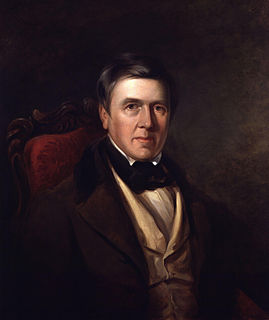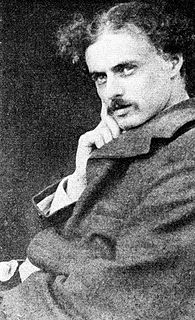Related Research Articles

Catherine Greenaway was an English Victorian artist and writer, known for her children's book illustrations. She received her education in graphic design and art between 1858 and 1871 from the Finsbury School of Art, the South Kensington School of Art, the Heatherley School of Art and the Slade School of Fine Art. She began her career designing for the burgeoning holiday card market, producing Christmas and Valentine's cards. In 1879 wood-block engraver and printer, Edmund Evans, printed Under the Window, an instant best-seller, which established her reputation. Her collaboration with Evans continued throughout the 1880s and 1890s.

David Cox was an English landscape painter, one of the most important members of the Birmingham School of landscape artists and an early precursor of Impressionism.

William Jabez Muckley was a noted English artist who was born at Wordsley, Kingswinford, in Staffordshire. He was the eldest of the seven children of Jabez Muckley who was a glass artisan.

Wood engraving is a printmaking technique, in which an artist works an image or matrix of images into a block of wood. Functionally a variety of woodcut, it uses relief printing, where the artist applies ink to the face of the block and prints using relatively low pressure. By contrast, ordinary engraving, like etching, uses a metal plate for the matrix, and is printed by the intaglio method, where the ink fills the valleys, the removed areas. As a result, wood engravings deteriorate less quickly than copper-plate engravings, and have a distinctive white-on-black character.

Eric William Ravilious was a British painter, designer, book illustrator and wood-engraver. He grew up in Sussex, and is particularly known for his watercolours of the South Downs and other English landscapes, which examine English landscape and vernacular art with an off-kilter, modernist sensibility and clarity. He served as a war artist, and died when the aircraft he was in was lost off Iceland.

James Tibbits Willmore was a British engraver.

Thomas Bock was an English-Australian artist and an early adopter of photography in Australia. Born in England he was sentenced to transportation in 1823. After gaining his freedom he set himself up as one of Australia's first professional artists and became well known for his portraits of colonists. As early as 1843 he began taking daguerreotypes in Hobart and became one of the earliest commercial photographers in Australia.

Joseph Vincent Barber (1788–1838), known as Vincent Barber, was an English landscape painter and art teacher.
Joseph Barber was an English landscape painter and art teacher, and an early member of the Birmingham School of landscape painters.

Bernard Sleigh was an English mural painter, stained-glass artist, illustrator and wood engraver, best known for An Ancient Mappe of Fairyland, Newly Discovered and Set Forth, which depicts numerous characters from legends and fairytales. There is a copy of The Ancient Mappe in the Library of Congress in Washington, D.C. He was a member of the Royal Birmingham Society of Artists between 1923 and 1928. As a young man, Sleigh was greatly inspired by the work of George MacDonald and William Morris.
William Radclyffe was an English engraver and painter.

Charles Theodosius Heath was a British engraver, currency and stamp printer, book publisher and illustrator.
James Baylis Allen (1803–1876) was a British engraver. Allen, together with Edward and William Radclyffe and the Willmores, belonged to a school of landscape-engravers which arose in Birmingham, where there were numerous engravers working on iron and steel manufactures.

Birmingham has a distinctive culture of art and design that emerged in the 1750s, driven by the historic importance of the applied arts to the city's manufacturing economy. While other early industrial towns such as Manchester and Bradford were based on the manufacture of bulk commodities such as cotton and wool, Birmingham's economy from the 18th century onwards was built on the production of finished manufactured goods for European luxury markets. The sale of these products was dependent on high-quality design, and this resulted in the early growth of an extensive infrastructure for the education of artists and designers and for exhibiting their works, and placed Birmingham at the heart of debate about the role of the visual arts in the emerging industrial society.
William Home Lizars was a Scottish painter and engraver.

John Pye was a British landscape engraver.

Blair Rowlands Hughes-Stanton was a major figure in the English wood-engraving revival in the twentieth century. He was the son of the artist Sir Herbert Hughes-Stanton. He exhibited with the Society of Wood Engravers, but was more in sympathy with the philosophy of the English Wood Engraving Society, of which he was a founding member in 1925. He co-directed the Gregynog Press from 1930 to 1933 with his wife, Gertrude Hermes.

Edward Radclyffe (1809–1863) was a British engraver, known from his illustrations of Thomas Roscoe's The London & Birmingham railway from 1839 in cooperation with George Dodgson Callow.
Charles Pye Jr. was a British engraver from Birmingham. He illustrated topographical subjects, and published a Holy Family after Michelangelo.

Henry Ninham was an English landscape artist, engraver and heraldic painter. He and his father John Ninham belonged to the Norwich School of painters, a group of artists who all worked or lived in Norwich during all or part of their working lives from around 1800 to 1880. Along with the Norwich School artists John Thirtle and David Hodgson, he was the foremost recorder of Norwich's architectural heritage prior to the invention of photography.
References
- 1 2 Hartnell, Roy (1996), Pre-Raphaelite Birmingham, Studley: Brewin Books, p. 11, ISBN 9781858580647
- ↑ Wildman, Stephen, Birmingham - Art life and organization, Grove Art Online, Oxford: Oxford University Press, retrieved 25 October 2012
- ↑ Hill, Joseph (1907), The book makers of old Birmingham; authors, printers, and book sellers, Birmingham: Printed at the Shakespeare Press for Cornish Bros., pp. 6–7, OCLC 3773421